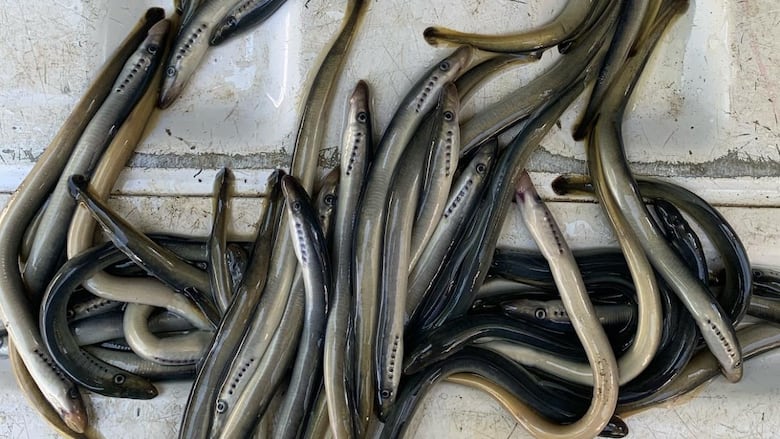U.S. firings reversed, yet Great Lakes sea lamprey fight faces uphill battle
The Great Lakes sea lamprey control program unsure if U.S. workers will return after firing

The Great Lakes sea lamprey control program will proceed this year, though delayed, after U.S. President Donald Trump's administration was recently ordered to reinstate more than a dozen federal workers at the binational agency responsible for protecting the Great Lakes fishery.
The Great Lakes Fishery Commission runs an annual program that treats streams and rivers with targeted chemical applications to kill sea lamprey larvae in both countries before they can migrate into the Great Lakes and harm fish populations.
The Trump administration's February firing of probationary federal workers and a freeze on seasonal hiring jeopardized the program's operation, which typically runs from April to October.

"The loss of those 25 seasonal employees and the loss of those 12 permanent employees really placed us in a difficult spot with regard to the execution of the 2025 program," said Greg McClinchey, director of policy and legislative affairs for the commission.
"These are folks that are out in the field. For the most part, they're actually boots in the water, doing the treatments out there, doing the stuff that has to be done," he added.
McClinchey explained that after making representations to congressional leadership, members of the Great Lakes delegation quickly responded. The seasonal hiring freeze was eventually reversed, and a court ruling reinstated the probationary employees.
'It's a pretty tall order'
McClinchey said the challenge of covering more ground with fewer staff and potentially starting later in the season could affect the program.
"It's a pretty tall order," he said. "There will be an impact, I'm sure, but I can't quite define what that will be yet."
McClinchey said that if the sea lamprey control program were reduced by a third, 2.5 million additional lampreys would remain in the system, consuming approximately 12 million pounds of fish valued at $270 million USD per year.
Sea lampreys spend their formative years and spawn in rivers and streams, and as the water warms up, they migrate to the Great Lakes. That's why the control program focuses on treating these waterways before the lampreys can enter the lakes and cause damage, McClinchey explained.
Each female lamprey can produce about 100,000 eggs, and they have no natural predators in the Great Lakes ecosystem, he said.
A devastating impact

George Purvis, a commercial fishing operator and adviser on the commission, knows all too well the devastating impact of sea lamprey.
Since 1882, his family has been operating Purvis Fisheries on Burnt Island, located on Manitoulin Island in Lake Huron.
"We saw the first sea lamprey in our fishery in 1934 and by 1944 we were out of business. We were tied to the dock because there wasn't a lake trout left," Purvis said. "The trout were all laying on the bottom dead where the sea lamprey had killed them."
He said his family had to switch to fishing deep water herring to survive.
"They grab the fish and hang on to the side of it and pull the blood out of the fish till they kill it, like they just actually physically bleed the fish to death," he explained.
Purvis said he hopes the sea lamprey control program will proceed, but he's uncertain if they can fully treat all streams this year.
McClinchey said the commission is currently working on remapping the 2025 control season, scheduling early treatments in the U.S. and trying to determine how many staff will return.
"While the 2025 season isn't quite like we had envisioned it maybe two months ago, it's going to be able to move forward, and we will actually be able to have treatment on the American side of the border."

